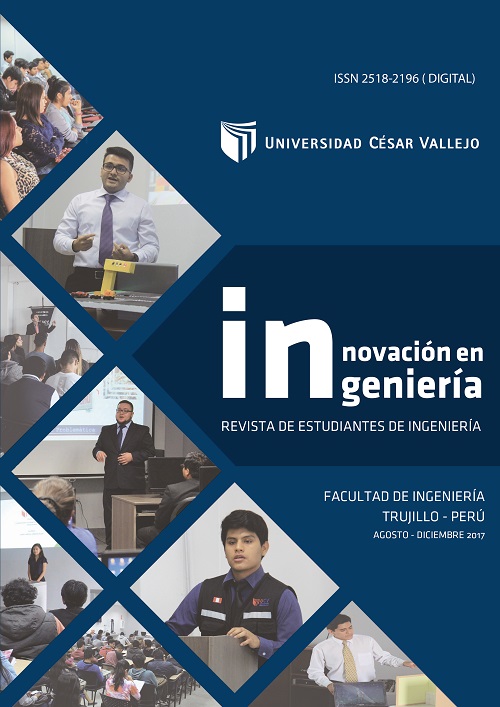Water quality of the Pollo river micro-basin - District of Otuzco, using aquatic macroinvertebrates as bioindicators
Keywords:
Water quality, Aquatic macroinvertebrates, BioindicatorsAbstract
The present research work had was objective to determine the water quality of the micro river basin of the Pollo River - District of Otuzco, using aquatic macroinvertebrates as bioindicators. The development involved the use of three sampling points (MP), of macroinvertebrates. For the collection of the species, Red D-net was used, with two repetitions per sampling point, also being physicochemical parameters registered of the water of the Pollo river. 949 macroinvertebrates distributed in 5 classes, 11 orders and 16 families were collected. The results of this study indicated similarity in the richness of macroinvertebrates in PM1 and PM2 and a difference of these with respect to PM3, besides that the point with the highest absolute abundance is PM3, which the Baetidae family, had the highest abundance relative in PM1 and PM2 and the family Cypraeidae, in PM3. According to the dominance index of Simpson (S) 0.04, in PM3 meant that there is a greater dominance of the family Cyprididae. The Jaccard similarity analysis of the taxa were J = 0.63% between PM1 and PM2; J = 0.39% between PM2 and PM3 and between PM1 and PM3. The physicochemical variables evaluated and the results obtained with the biotic indices nPeBMWP and Shannon-Wiever indicated that there are differences between the water quality of PM1 and PM2 with respect to PM3.
Downloads
Downloads
Published
How to Cite
Issue
Section
License

This work is licensed under a Creative Commons Attribution-NonCommercial 4.0 International License.






